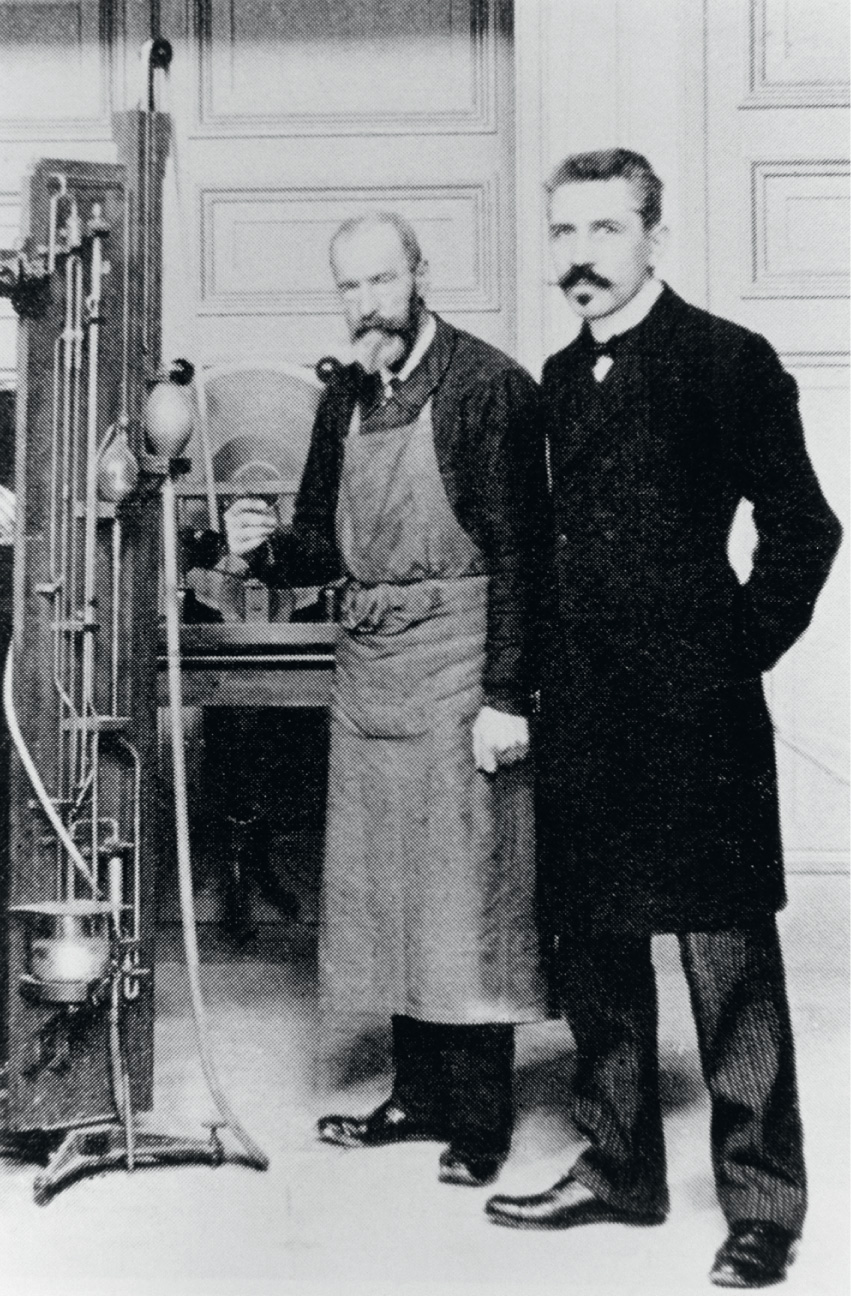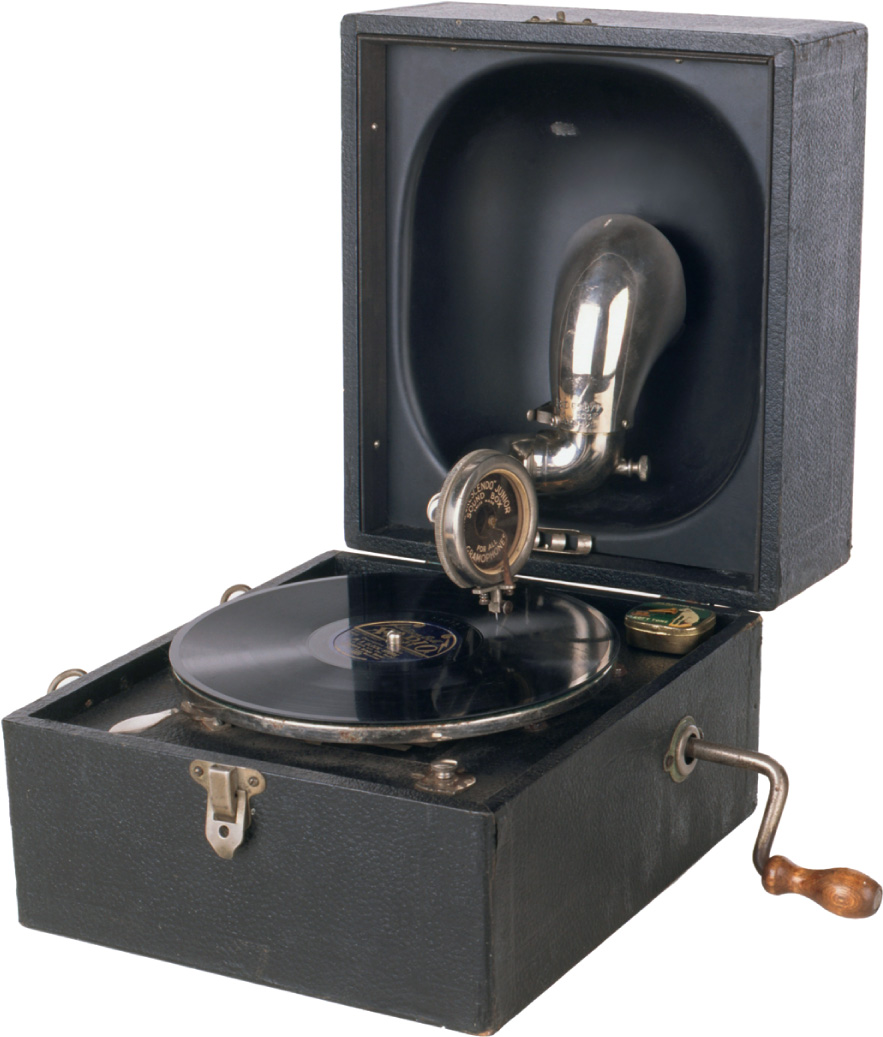
French physicist Paul Langevin (1872–1946), right, who studied under Pierre Curie.
In the middle of the eighteenth century, Carl Linnaeus and other researchers had discovered and studied the pyroelectric effect, which produces an electric potential difference (a voltage) across the opposite sides of certain kinds of crystal when they are heated. It was suggested that the effect could be explained as a result of the warmth stretching the crystals in such a way that the balance between negative and positive charges inside them was distorted. This led several people to come up with the idea that a similar electrical effect might be produced by squeezing crystals physically; but it was not until the beginning of the 1880s that the French brothers Jacques and Pierre Curie carried out experiments that proved that this was the case, and measured the tiny voltages produced in crystals of quartz, tourmaline, topaz, cane sugar, and Rochelle salt (potassium sodium tartrate). They gave the phenomenon the name piezoelectricity (from the Greek word piezein, meaning ‘squeeze’).
In the following year, 1881, the Luxembourgian Gabriel Lippmann predicted that the opposite effect should also occur – that if an electric potential is applied across the crystal it will be distorted. Almost immediately, the Curie brothers carried out a further series of experiments which showed that this is indeed the case. As the voltage applied to the crystal varies, the crystal stretches and squeezes in response.
The effect occurs not only in the kinds of crystals (such as quartz) that the word ‘crystal’ conjures up to most people, but also in other substances, including in some ceramics and even biological material such as bone, which are ‘crystals’ to scientists because of the repeating pattern of atoms in the structure, like a repeating pattern in wallpaper. The crystal pattern is made up of units (charged atoms, or ions) which each have positive or negative charge, arranged so that the overall charge cancels out. Substances that exhibit piezoelectricity have a particular pattern of repeating atoms, which makes it possible for the squeeze to push some of the atoms closer together or further apart, changing the balance of charges so that one side of the crystal ends up with a positive charge and the other side with a negative charge. This is a very small effect. In a typical crystal, the deformation is about 0.1 per cent of the crystals original size.
The piezoelectric properties of bone have an important biological role. If a bone is under stress this produces a local piezoelectric effect in the stressed region. The resulting electric charge attracts the bone-building cells known as osteoblasts, which deposit calcium and other minerals on the stressed region of the bone, increasing the density of the bone where it is most needed.
Until the First World War, piezoelectricity was little more than a curiosity. But the reverse piezoelectric effect, when a crystal is made to vibrate using electricity, suddenly became important when the French physicist Paul Langevin (one of Pierre Curie’s former students) and his colleagues used it to generate ultrasound waves which could be used to detect submarines – the forerunner of modern SONAR devices. At about the same time, unknown to the French team, Ernest Rutherford and his colleagues in Manchester also developed a similar detector for hunting submarines. The vibrating crystal could generate a chirrup of ultrasound which travelled from a ship through the water to bounce off a submarine and be detected back at the ship by a hydrophone. Such an ultrasound generator is called an ultrasound transducer. The development of the device came too late to affect the progress of the First World War, although Langevin’s team did detect echoes from a submarine at a depth of 1500 metres in 1918. It was, though, a crucial tool in the battle against the U-boats in the Second World War.

Langevin’s work is widely regarded as having kickstarted the study of ultrasonics and its applications. But since 1918, piezoelectricity has also been used in many other applications. In microphones, vibrating sound waves are used to jostle a crystal, generating electricity which can go to an amplifier or recording device. The same sort of thing happens in an old-fashioned record player, where the needle is vibrated as it moves along the grooves in the vinyl record, producing a variable electric current. The opposite effect (also known as a transducer) happens in a quartz watch or clock, where electricity from a battery makes a crystal vibrate very rapidly at a precisely known rate. This is then slowed down to a steady tick electronically, and used to move the hands of the timepiece around its face. And in the most basic application, spark ignition lighters used to fire up gas rings operate by piezoelectricity; when you press the trigger a crystal is squeezed, generating an electric potential difference that makes a spark jump across a narrow gap.
